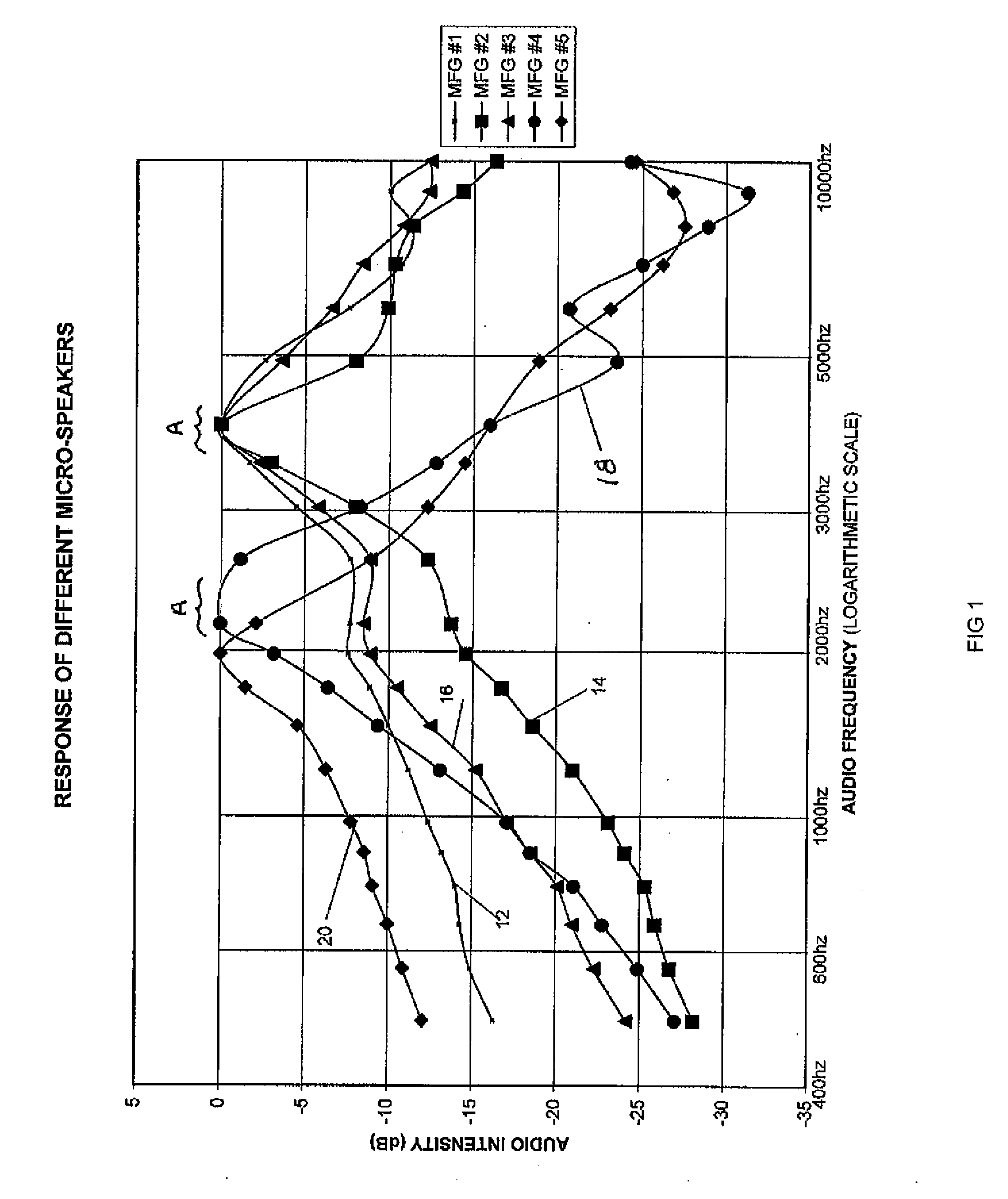Electronically compensated micro-speakers and applications
a micro-speaker and electromagnetic compensation technology, applied in the field of electromechanical compensation, can solve the problems of not addressing the method of significantly changing or improving the basic micro-speaker properties, and the patent does not address the spectrum change of the micro-speaker, and achieve the effect of correcting such hearing deficiencies
- Summary
- Abstract
- Description
- Claims
- Application Information
AI Technical Summary
Benefits of technology
Problems solved by technology
Method used
Image
Examples
Embodiment Construction
[0028]The experimentally measured output acoustic spectra of some commercially available earbud micro-speakers are illustrated in FIG. 1 for five different manufacturers (12, 14, 16, 18, and 20). Note that each speaker has a resonant peak region (A) in the audio intensity as a function of audio frequency. The location of each resonant peak region lies between 2000 Hz and 4000 Hz, with the more expensive earbud micro-speakers being at the high frequencies. In all cases shown in FIG. 1, the response declines for frequencies both higher and lower than the resonant peak region. This type of response as a function of frequency is due to the resonant vibration of the diaphragm of the micro-speaker. The ideal response for any speaker is that of a flat, frequency independent relationship. From an audio listener's view, curve 12 shows the smallest variation over the entire frequency region shown, and would be judged to be the “best” micro-speaker. The responses of some micro-speakers have be...
PUM
 Login to View More
Login to View More Abstract
Description
Claims
Application Information
 Login to View More
Login to View More - R&D
- Intellectual Property
- Life Sciences
- Materials
- Tech Scout
- Unparalleled Data Quality
- Higher Quality Content
- 60% Fewer Hallucinations
Browse by: Latest US Patents, China's latest patents, Technical Efficacy Thesaurus, Application Domain, Technology Topic, Popular Technical Reports.
© 2025 PatSnap. All rights reserved.Legal|Privacy policy|Modern Slavery Act Transparency Statement|Sitemap|About US| Contact US: help@patsnap.com



